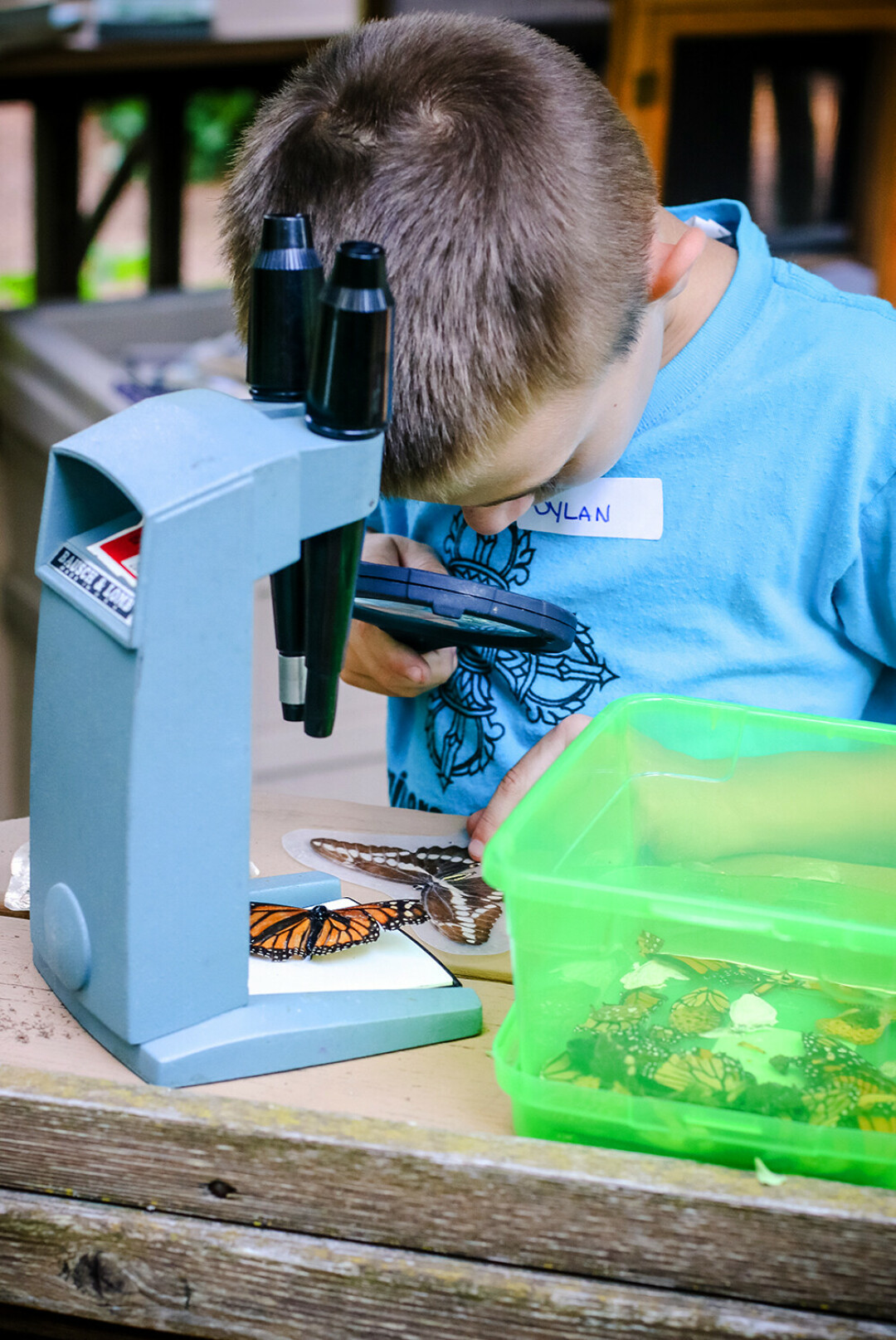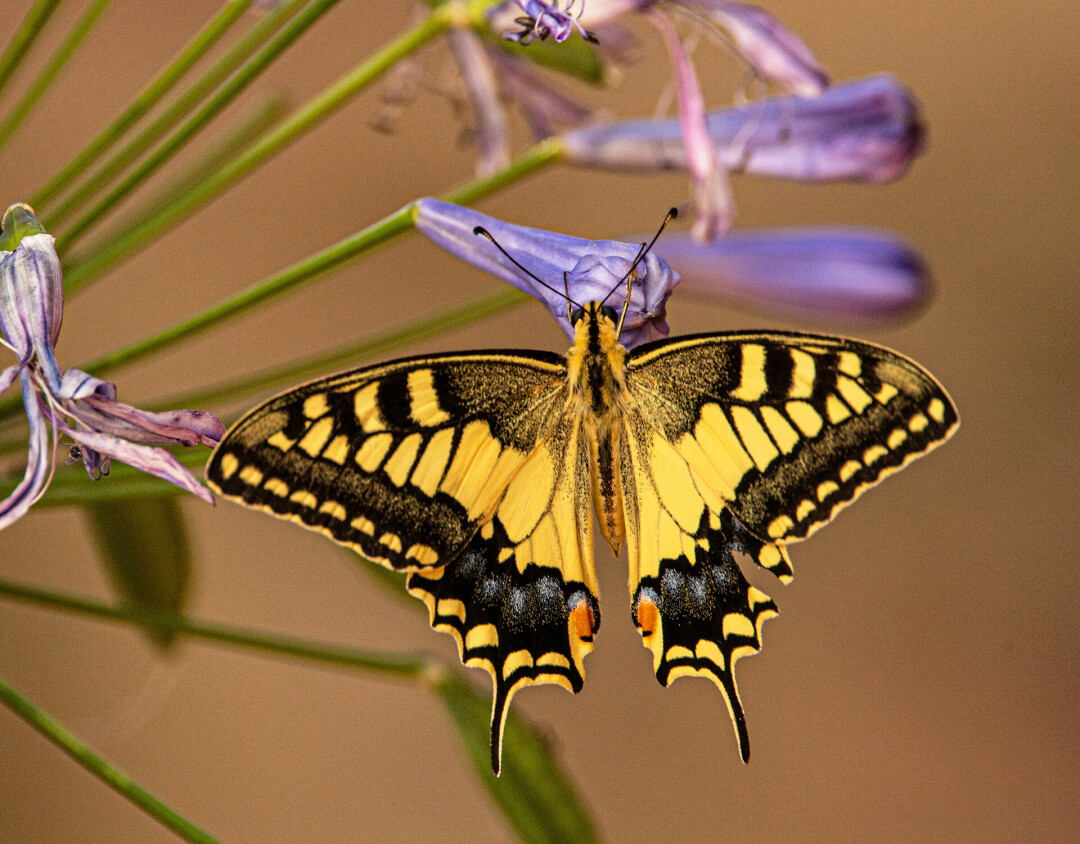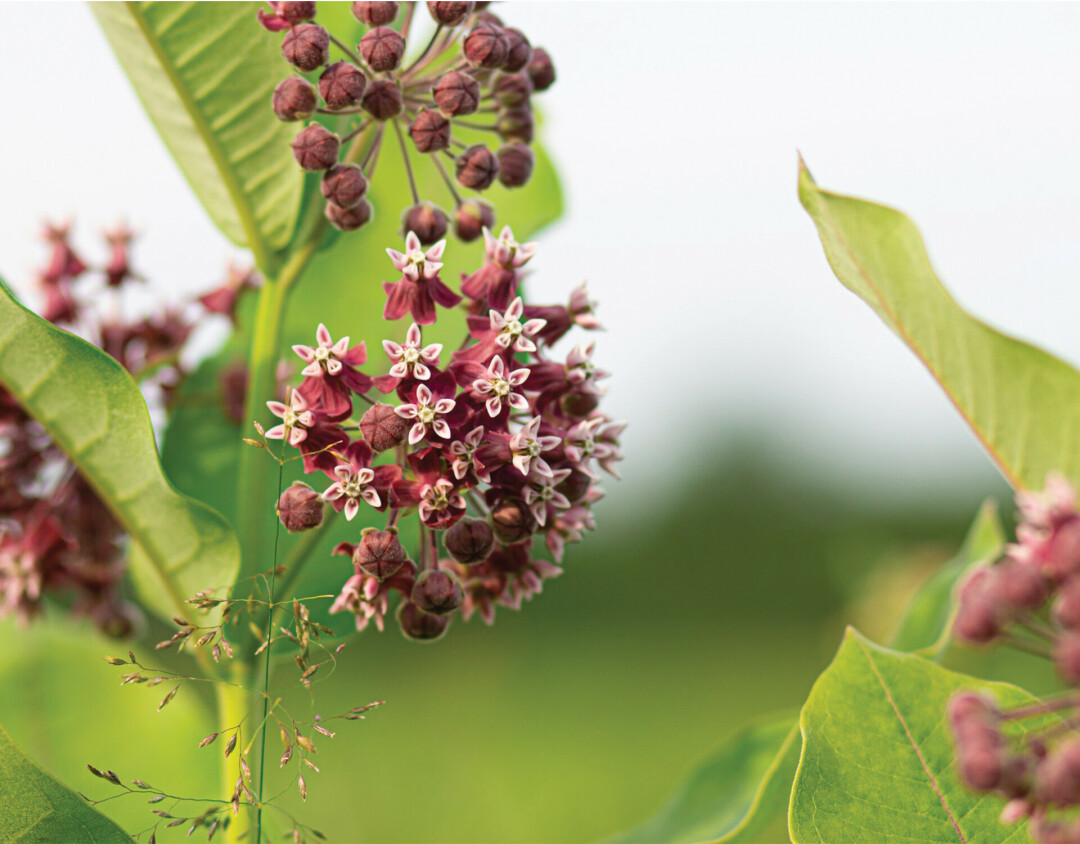Buzzin’ In Your Backyard: Local Experts Talk Kid-Friendly Bugs and Plants
become a backyard biologist this summer with some tips from Beaver Creek naturalists
McKenna Scherer, photos by Andrea Paulseth |

The Chippewa Valley is flourishing with fresh greenery and the reemergence of summertime animals and insects. With the expertise of local Beaver Creek staff, kids can become apprentice naturalists themselves right in their own backyard.
Beaver Creek Reserve offers 400 acres filled with various plants and animals of all types, even wetland and savannah area wildlife, right here in our slice of the Midwest.
Naturalists – experts of natural history – over at Beaver Creek gave us the low-down on kid-friendly plants and insects to be on the hunt for this season.
Naturalist Megan Giefer talked about all things butterflies, a familiar and gorgeous insect to look out for in the Valley.
“Some of the fun colorful winged insects that we can find in our backyards is the famous Monarch butterfly,” Giefer said. “Its bright orange color pops and their size allows us to instantly identify its species.”
“Another butterfly that we could find are swallowtails,” Giefer said. “We have three types of swallowtails in Wisconsin: the Giant, Tiger, and Black.”

Giefer said these three butterflies are large and have a prominent “tail” on their bottom hind wings, making them easy to identify.
Fellow Beaver Creek Naturalist Jim Schwiebert pointed out another plant that can be found right in your backyard and along Valley trails – the catchweed bedstraw. Typically misidentified as a random weed, this plant’s leaves can actually be eaten raw or cooked and can be used as a coffee substitute, too! In fact, the catchweed bedstraw is in the same plant family as coffee.
“[It] sticks like velcro to your clothes,” Schweibert said.
“One last butterfly I find to be so fun and sometimes misidentified as a moth is the Mustard and Cabbage Whites. These are small butterflies that are white,” Giefer said.

She also cautioned not to squish the Mustard and Cabbage Whites’ caterpillars, as they are small, but also amazing pollinators!
Giefer recommended buying a butterfly net and seeing how many butterflies you can catch right in your own backyard! Butterfly nets are specially made to be delicate enough to capture the whimsical winged insects without hurting them.
A plant that often draws in Monarchs is the Milkweed.
“Milkweed is a Monarch butterflies host plant, which means the larvae need this plant to survive,” Giefer said. “A way to identify milkweed is to rip a little piece of the leaf off and if you see a white milky sap run out, you know exactly what plant it is!”

Visit Beaver Creek’s Butterfly House this summer or schedule a whole tour through their website to learn about other animals, insects, and wildlife.






















